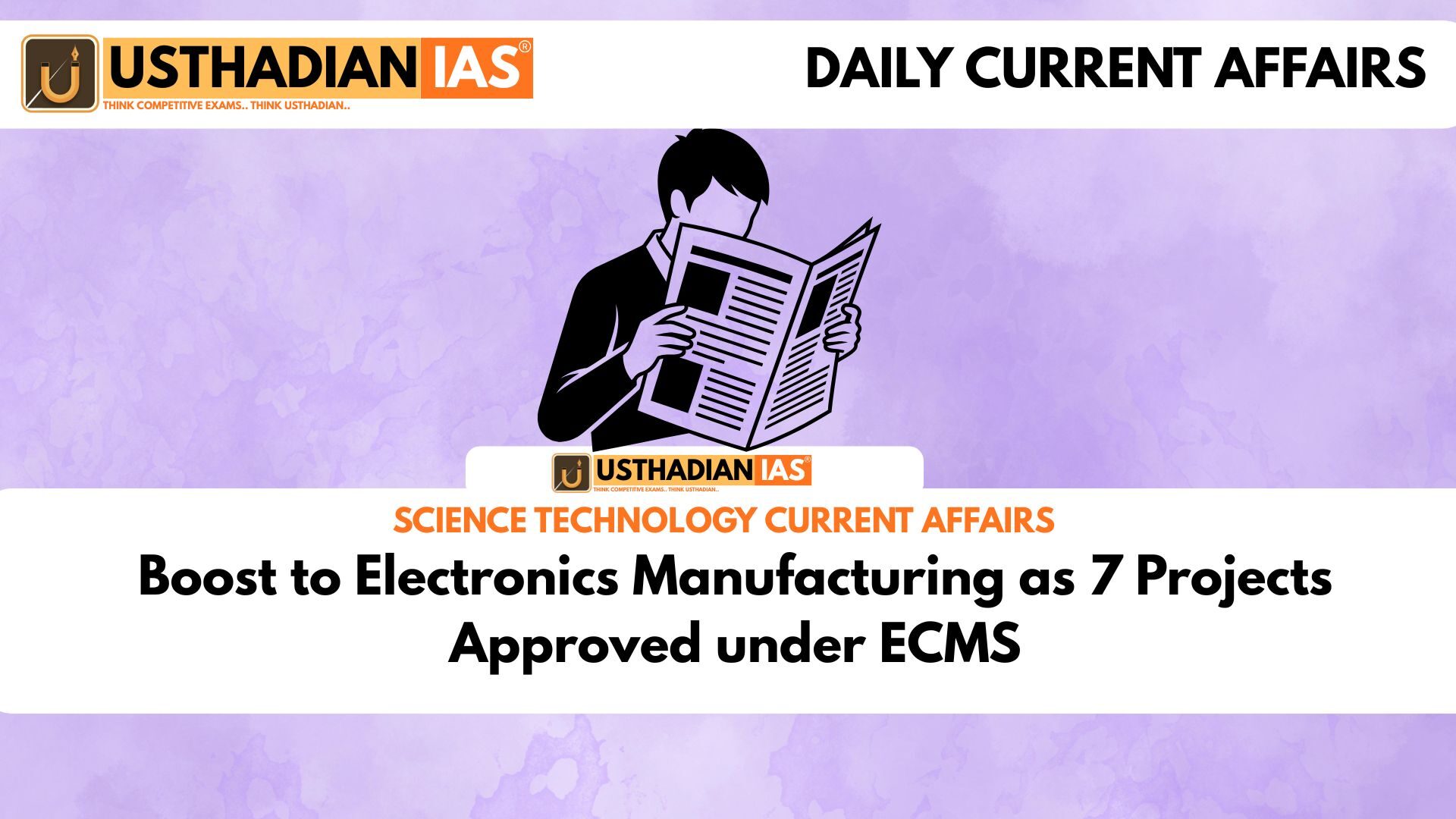Strengthening India’s Electronics Backbone
Boost to Electronics Manufacturing as 7 Projects Approved under ECMS: The approval of seven projects under the Electronics Component Manufacturing Scheme (ECMS) marks a major step toward building India’s self-reliant electronics ecosystem. These projects will promote large-scale production of critical components used in smartphones, automobiles, medical devices, and telecommunications.
Launched in April 2025, the scheme comes with an ambitious outlay of ₹22,919 crore to make India a hub for component-level manufacturing, moving beyond final product assembly.
Static GK fact: The ECMS was introduced under the Digital India and Atmanirbhar Bharat initiatives to strengthen domestic manufacturing capabilities.
Objectives and Incentive Structure
The primary goal of ECMS is to create a strong and self-sustaining manufacturing ecosystem for electronic components. It aims to attract domestic and global investment across the entire value chain while boosting domestic value addition.
The scheme offers two main types of incentives:
- Turnover Linked Incentive (TLI): Provided for 6 years with an additional 1-year gestation period.
- Capex Incentive: Granted for 5 years to support capital investments in critical manufacturing infrastructure.
Static GK Tip: Incentive-based schemes like ECMS are modeled on the success of PLI (Production Linked Incentive) Schemes introduced across 14 sectors in India.
Role of MeitY and Targeted Segments
The Ministry of Electronics and Information Technology (MeitY) serves as the nodal ministry for ECMS. The scheme targets both sub-assemblies (like display and camera modules) and bare components such as non-surface mount devices.
This initiative bridges the gap between component design and final product assembly, ensuring India’s presence in high-value segments of global electronics manufacturing.
Static GK fact: MeitY also administers key programs like the Design Linked Incentive (DLI) Scheme and the Semicon India Programme.
India’s Growing Electronics Industry
India’s electronics sector currently contributes 3.4% of the national GDP, showing strong upward momentum. Production has grown from ₹1.9 lakh crore in 2014–15 to ₹11.3 lakh crore in 2024–25, marking a six-fold increase.
Exports too have surged from ₹38,000 crore to ₹3.27 lakh crore in the same period — an eight-fold rise. Electronics have now become India’s third largest and fastest-growing export category in 2024–25, moving up from the seventh position in 2021–22.
Static GK Tip: India is currently the second largest mobile phone manufacturer in the world after China.
Strategic Impact and Future Outlook
The approval of these seven projects is expected to deepen India’s electronics value chain, reduce import dependency, and enhance technological competitiveness. It aligns with India’s goal of achieving $300 billion in electronics production by 2026.
As global supply chains shift, India’s proactive policy interventions such as ECMS, PLI, and DLI are likely to make it a preferred investment destination for electronics manufacturing.
Static Usthadian Current Affairs Table
Boost to Electronics Manufacturing as 7 Projects Approved under ECMS:
| Topic | Detail |
| Scheme Name | Electronics Component Manufacturing Scheme (ECMS) |
| Launch Year | April 2025 |
| Total Outlay | ₹22,919 crore |
| Nodal Ministry | Ministry of Electronics and Information Technology (MeitY) |
| Projects Approved | 7 |
| Tenure | TLI – 6 years (1-year gestation), Capex – 5 years |
| Targeted Segments | Sub-assemblies and bare components |
| GDP Contribution | 3.4% from electronics sector |
| Production Growth | ₹1.9 lakh crore (2014–15) to ₹11.3 lakh crore (2024–25) |
| Export Growth | ₹38,000 crore to ₹3.27 lakh crore |
| Global Rank | 2nd largest mobile phone manufacturer |
| Broader Goal | Self-reliance in electronics manufacturing |
| Linked Schemes | PLI, DLI, Semicon India |
| Vision Year | Electronics production target by 2026 |
| Objective | Promote domestic value addition and investment |








